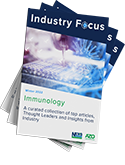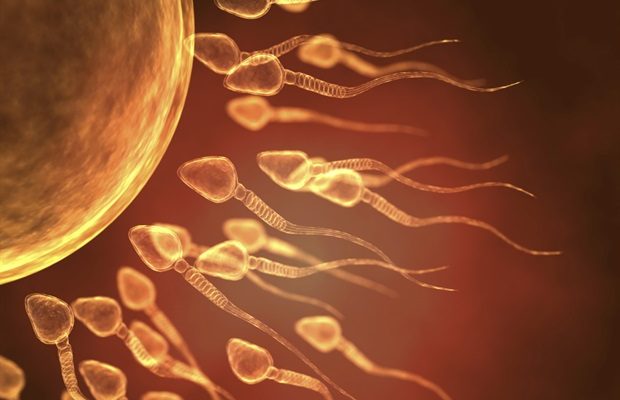Different cell types-;say, heart, liver, blood, and sperm cells-;possess characteristics that help them carry out their unique jobs in the body. In general, those characteristics are hard-wired. Without intervention, a heart cell won't spontaneously transform into a liver cell.
Yet researchers from the University of Pennsylvania School of Veterinary Medicine, working with collaborators from the University of Texas at San Antonio and Texas Biomedical Research Institute, have prompted marmoset blood cells to acquire the flexibility of stem cells. Then they directed those stem cells to take on the characteristics of sperm precursors.
In the journal eLife, they report on their step-by-step process of rewiring cells. The findings-;the first in the marmoset, a small monkey-;open new possibilities for studying primate biology and developing novel assisted reproductive technologies like in vitro gametogenesis, a process of generating germ cells, sperm or eggs, in a laboratory dish, akin to how in vitro fertilization involves the generation of an embryo outside the human body.
Scientists know how to generate functional sperm and egg from induced pluripotent stem cells in mice, but mouse germ cells are very different from human germ cells. By studying marmosets, whose biology more closely resembles ours, we can bridge the gap."
Kotaro Sasaki, assistant professor at Penn Vet
To understand how to generate germ cells, the researchers first studied germ cell precursors from marmoset embryos, which had never been rigorously characterized for the species. They found that these early-stage cells, known as primordial germ cells (PGCs), bore certain molecular markers that could be tracked over time. Performing single-cell RNA sequencing on these cells revealed that PGCs expressed genes characteristic of early-stage germ cells and those related to epigenetic modifications, which regulate gene expression. PGCs did not, however, express genes known to be turned on later in the process of germ cell development, when precursor cells migrate to the ovaries or testes to complete their maturation.
Their findings were "consistent with the notion that marmoset germ cells undergo a reprogramming process," Sasaki says, that "turns off" certain markers and allows PGCs to proceed through the stages of germ cell development. The patterns the researchers observed in marmoset cells closely resembled what has been found in both humans and other monkey species but were distinct from those of mice, another reason why the marmoset could be a valuable model for reproductive biology studies.
With that information in hand, the team set about trying to reconstitute the process of development artificially, in the lab. The first step: to transform blood cells into induced pluripotent stem cells (iPSCs), cells that retain the ability to give rise to a number of other cell types.
Immunology eBook

"I have a lot of experience in working with cell culture and induced pluripotent stem cells, but establishing a stable culture for the marmoset cells was a difficult part of the study," says Yasunari Seita, a postdoctoral researcher in Sasaki's lab and a lead author.
After much trial and error and applying lessons learned from mouse, human, and other investigations, Seita landed upon a strategy that enabled him to generate and sustain stable cultures of iPSCs. A key to success was the addition of an inhibitor of the signaling pathway governed by the Wnt protein, which is involved in a variety of cellular functions, such as cell differentiation.
The next step was to move from iPSCs to germ cell precursors. Once again, considerable experimentation went into developing the protocol for this transformation. The method that worked best involved adding a cocktail of growth factors to successfully prompt between 15-40% of their culture to take on the characteristics of these germ cell precursors.
"We were excited to see that efficiency and were able to expand our cultures, passaging them multiple times and seeing nice, exponential growth," Sasaki says. "The cells maintained key germ cell markers but didn't express other markers that are associated with the migration to the gonad."
In a final stage of the study, the research team coaxed these lab-grown cells to take on the characteristics of later-stage germ cells. Based on a method Sasaki and colleagues had established earlier in human cells and reported in a 2020 Nature Communications paper, they cultured the cells with mouse testicular cells over the course of a month. The result was a successful growth with some cells beginning to turn on genes associated with later-stage sperm cell precursors.
Developing new approaches to study the marmoset sets up the Penn and University of Texas at San Antonio teams-;as well as the scientific community in general-;to make use of the species as an important research model. Marmosets, for example, have cognitive functioning that resembles that of humans in many ways and thus could lead to new insights in neuroscience.
For Sasaki's group, most interested in development of the reproductive system, marmosets represent a new avenue for pursuing studies of normal and abnormal development as well as fertility.
"When you think about the clinical applications of an assisted reproductive technology like in vitro gametogenesis, there are a lot of ethical, legal, and safety concerns that could arise," Sasaki says. "We definitely need a good preclinical model to explore before we move to human clinical translation."
University of Pennsylvania
Seita, Y., et al. (2023) Efficient generation of marmoset primordial germ cell-like cells using induced pluripotent stem cells. eLife. doi.org/10.7554/eLife.82263.
Posted in: Cell Biology | Genomics
Tags: Blood, Cell, Cell Culture, Cell Development, Embryo, Fertility, Fertilization, Gene, Gene Expression, Genes, Heart, in vitro, Induced Pluripotent Stem Cells, Laboratory, Liver, Medicine, Neuroscience, Ovaries, Preclinical, Protein, Research, RNA, RNA Sequencing, Signaling Pathway, Sperm, Stem Cells, Technology, Translation, Veterinary
Source: Read Full Article
